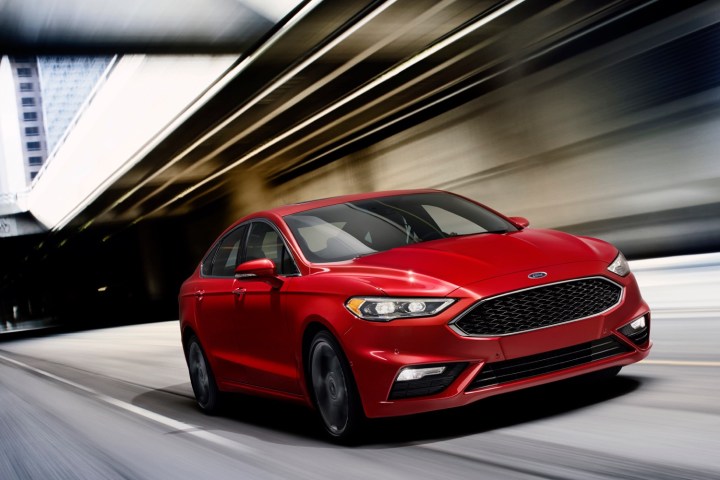
The 2017 Ford Fusion V6 Sport has computer-controlled shock absorbers that Ford claims can help limit pothole damage. It’s impossible to dodge every pothole, but Ford says the Fusion V6 Sport’s clever shocks can make driving through them less jarring, and limit potential damage to a car.
The system utilizes computers that read signals from twelve onboard sensors, adjusting the shocks’ firmness every two milliseconds. In regular driving, a firmer setting helps the wheels grip the pavement better, improving handling, while softer settings allow the suspension to soak up more of the impact from bumps and other imperfections, making the ride cushier. Modern adaptive suspension systems like the one in the Fusion seek a balance between these two qualities by changing settings in response to road conditions.
If the Fusion’s computers detect a pothole, they’ll actually use the stiffest setting. This prevents the wheel from falling as far into a pothole as it would with a softer setting, Ford claims. This makes the impact less severe. Once the front shocks have adjusted, the rear pair take their cue and prepare for impact as well. Engineers risked their spines driving over “countless” potholes to tune the software, according to Ford.
The carmaker claims the Fusion V6 Sport is the first midsize sedan to offer this kind of adaptive suspension tech. Unveiled at the 2016 Detroit Auto Show last month, the Sport also boasts a new 2.7-liter twin-turbocharged V6, that pumps out 325 horsepower and 350 pound-feet of torque. It also gets all-wheel drive, and some styling changes that will be applied to less-sporty 2017 Fusion models.
Those other Fusion models will go on sale this summer, with the V6 Sport following by a few weeks. We’re eager to see for ourselves how the computer-controlled shocks fare against the dreaded pothole.
Editors' Recommendations
- Ford halts reservations for its all-electric F-150 Lightning pickup
- Ford reveals the vehicle destined for its autonomous-car services
- Ford delays the launch of its robocar services by a year
- Ford could build its next Mustang-inspired electric car on Volkswagen bones
- Ford’s Breadcrumbs technology helps off-roaders find their way home


